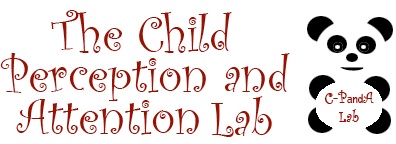Our visual experience begins with the independent detection of photons, but our percepts are of unified objects and scenes. Moreover, our visual scene is often cluttered, yet we manage to attend to the most important things in our environment. These topics frame our research, which explores the mechanisms underlying several aspects of visual perception and attentional selection. Our approach to investigating visual perception and attention is developmental cognitive neuroscience. That is, we use visually evoked potentials (VEPs) and psychophysics across typical and atypical development. By looking at behavior and its neural correlates across development, we hope to understand how "seeing" whole objects and textures is derived from individual elements.


Visit the
HD/EEG Lab with John E. Richards.
We are investigating the developmental trajectory of visual sensitivity to textures, objects and faces using visual-evoked potentials (VEPs), which are neural responses measured on the scalp surface. We use a high-density EEG system that allows us to listen to brain activity and poses minimal discomfort to our participants. We are currently looking for infants as young as 3 months of age to adults over 18 years of age to participate in our studies.
High-Density VEPs
-
-Tilt perception
-
-Visual crowding in children
-
-Visual enumeration
-
-Maturation of motion coherence and Glass pattern sensitivity
-
-Statistical representation of visual arrays
-
-Reading fluency
We are interested in how visual perception and attention change over development. They will perform various tasks such as shape discrimination, object detection, letter identification and enumeration on a computer screen. We are currently inviting children from 3.5 to 12 years of age and adults over 18 years of age to help in psychophysical studies.
Behavior

!!!NEWS!!!
Julia Englund, 2nd place winner at 2011 Graduate Student Day.
Breana Carter and Matt Shannon, 1st place winners at 2011 Discover Day.
Breana Carter is an SRCD Millennium Scholar, USC Voyager Awardee & USC Magellan Scholar.
Krystin Bourdua is a Magellan Apprentice Scholar.
Anne Payne joins the USC Scholarship and Fellowship Program.
New paper on Williams Syndrome to appear in Research in Developmental Disabilities.
C-PandA Lab will be at the Williams Syndrome Walk in Ware Shoals, SC!!!

Projects:


